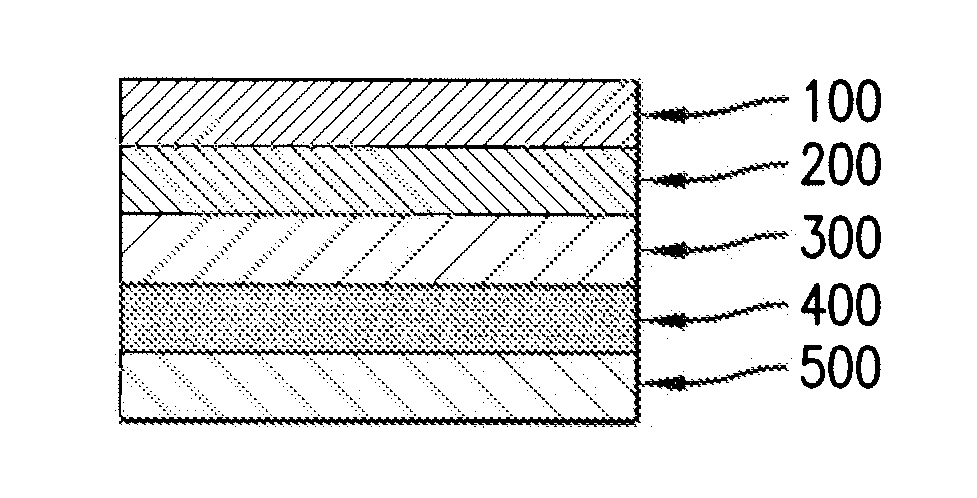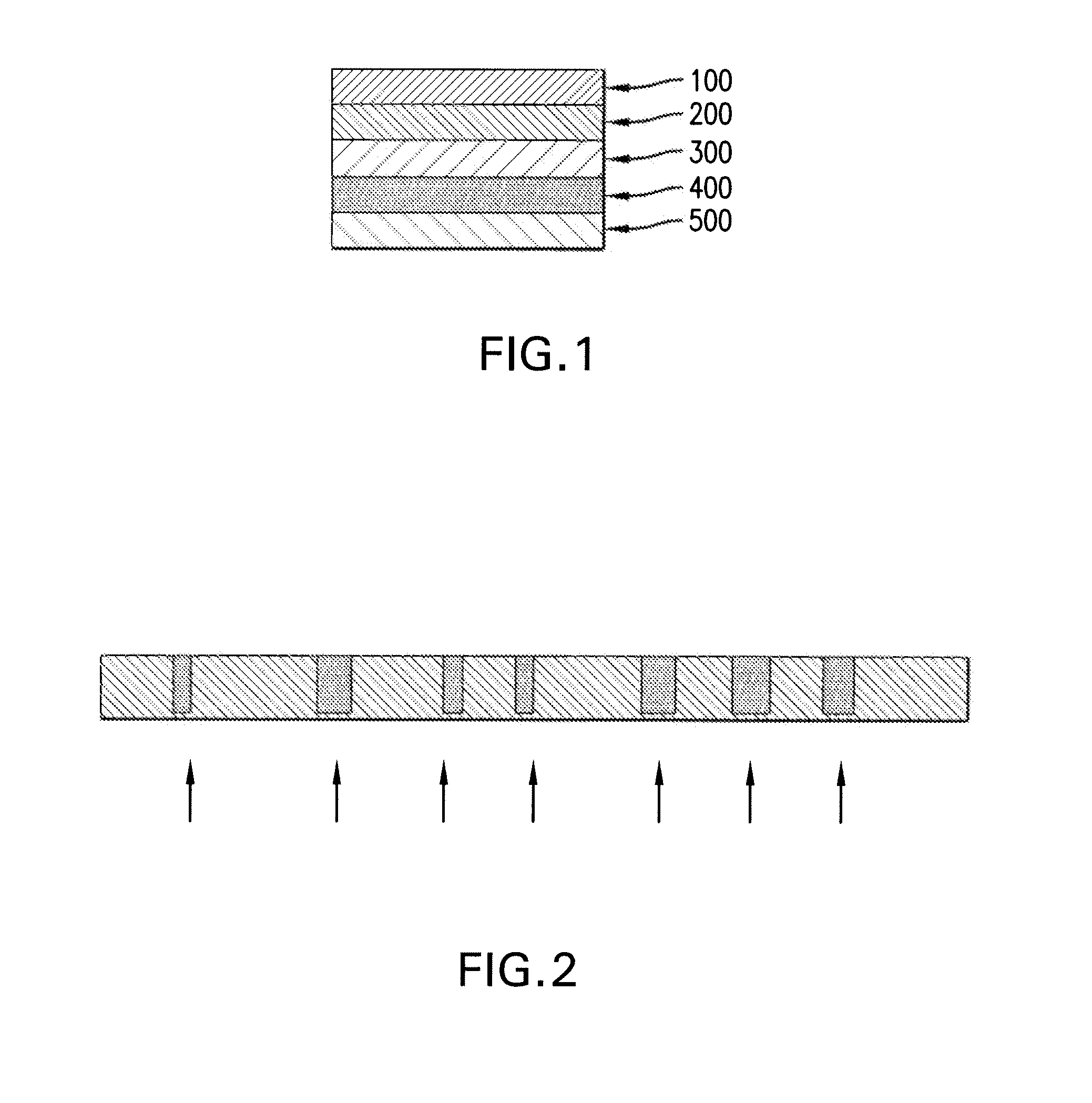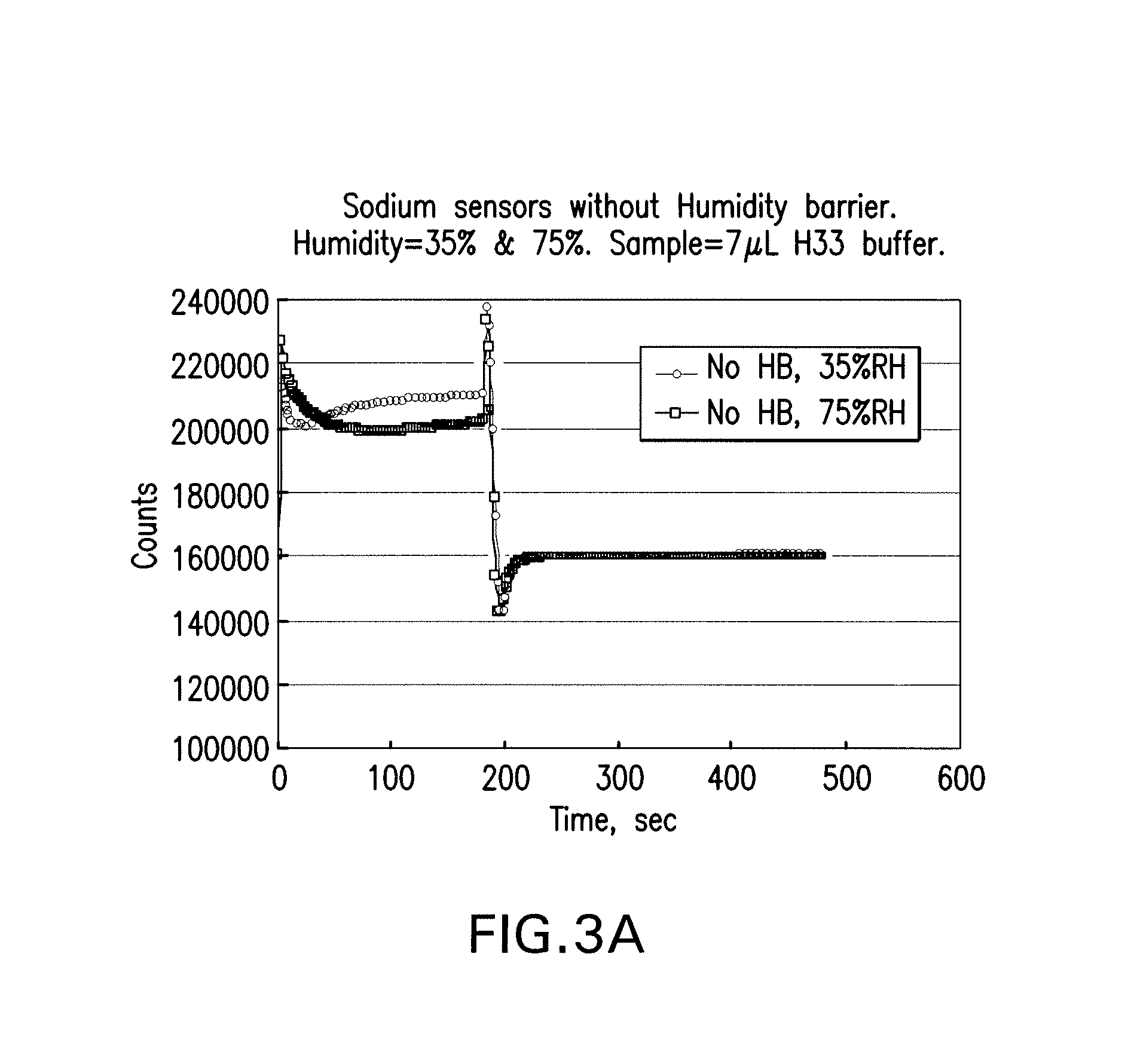Spreading layer and humidity control layer for enhancing sensor performance
a technology of humidity control and spreading layer, applied in the field of improved optical sensors, can solve the problems of increasing costs and limiting the shelf life of sensors, and achieve the effect of increasing costs and complicating cassette design
- Summary
- Abstract
- Description
- Claims
- Application Information
AI Technical Summary
Benefits of technology
Problems solved by technology
Method used
Image
Examples
example 1
[0039]One embodiment of the present invention, a sodium sensor, is described as follows. Such sensors are prepared as described further below.
[0040]0.5 g cellulose powder (25 μm sieved) with immobilized indicator (U.S. Pat. No. 5,952,491, the entire disclosure of which is incorporated by reference herein) was suspended in 9.5 g 10% (w / w) D4 hydrogel in 90% (w / w) ethanol-water for 16 h. The resulting homogeneous dispersion was coated onto a polyester foil (8.5″×11″ sheet) to a final dry thickness of 10 μm to form the Indicator layer as shown in FIG. 1. The Indicator layer was then coated with a dispersion consisting of 0.3 g carbon black suspended in 9.7 g 10% (w / w) D4 hydrogel in 90% (w / w) ethanol-water to a dry thickness of 5 μm to form an Overcoat layer. The Overcoat layer was then coated with a Humidity Control layer containing 0.5 g cellulose (10 μm), 1.0 g PVP and 8.5 g 10% (w / w) D4 hydrogel in 90% (w / w) ethanol-water to a dry thickness of 50 μm. The Humidity Control layer was ...
example 2
[0041]One embodiment for an optical chloride sensor, according to the present invention, is prepared as described below.
[0042]1.5 g of immobilized chloride indicator (U.S. Pat. No. 6,613,282, the entire disclosure of which is incorporated by reference herein) was suspended in 8.5 g of 10% (w / w) D4 hydrogel in 90% (w / w) ethanol-water for 16 h. The resulting homogeneous dispersion was coated onto a polyester film (8.5″×11″ sheet) to a final dry thickness of 10 μm to form the Indicator layer as shown in FIG. 1. The Indicator layer was then coated with 0.3 g carbon black suspended in 9.7 g 10% (w / w) D4 hydrogel in 90% (w / w) ethanol-water to a dry thickness of 5 μm to form an Overcoat layer. The Overcoat layer was then coated with a solution containing 0.3 g cellulose (15 μm), 0.5 g polyvinyl pyrrolidone (PVP) and 9.2 g 10% (w / w) D4 hydrogel in 90% (w / w) ethanol-water to a dry thickness of 20 μm to form the Humidity Control layer. The Humidity Control layer was then coated with a solutio...
example 3
[0043]One embodiment for an optical potassium sensor, according to the present invention, is prepared in the manner described further below.
[0044]0.5 g cellulose powder (10 μm sieved) with immobilized potassium indicator (U.S. Pat. No. 6,211,359, the entire disclosure of which is incorporated by reference herein) was suspended in 9.5 g of 10% (w / w) D4 hydrogel in 90% (w / w) ethanol-water for 16 h. The resulting homogeneous dispersion was coated onto a polyester film (8.5″×11″ sheet) to a final dry thickness of 10 μm to form the Indicator layer as shown in FIG. 1. The indicator layer was then coated with 0.3 g carbon black suspended in 9.7 g 10% (w / w) D4 hydrogel in 90% (w / w) ethanol-water to a dry thickness of 5 μm to form an Overcoat layer. The overcoat layer was then coated with a solution containing 0.7 g cellulose (20 μm), 1.5 g polyvinyl pyrrolidone (PVP) in 7.8 g 10% (w / w) D4 hydrogel in 90% (w / w) ethanol-water to a dry thickness of 40 μm to form the Humidity Control layer. The...
PUM
| Property | Measurement | Unit |
|---|---|---|
| Thickness | aaaaa | aaaaa |
| Thickness | aaaaa | aaaaa |
| Thickness | aaaaa | aaaaa |
Abstract
Description
Claims
Application Information
 Login to View More
Login to View More - R&D
- Intellectual Property
- Life Sciences
- Materials
- Tech Scout
- Unparalleled Data Quality
- Higher Quality Content
- 60% Fewer Hallucinations
Browse by: Latest US Patents, China's latest patents, Technical Efficacy Thesaurus, Application Domain, Technology Topic, Popular Technical Reports.
© 2025 PatSnap. All rights reserved.Legal|Privacy policy|Modern Slavery Act Transparency Statement|Sitemap|About US| Contact US: help@patsnap.com



